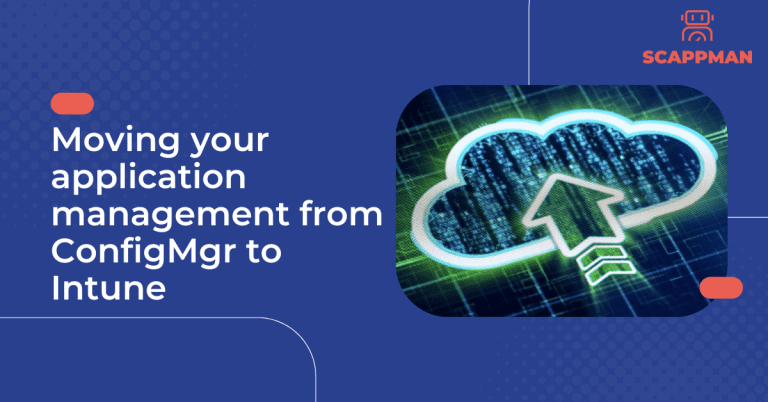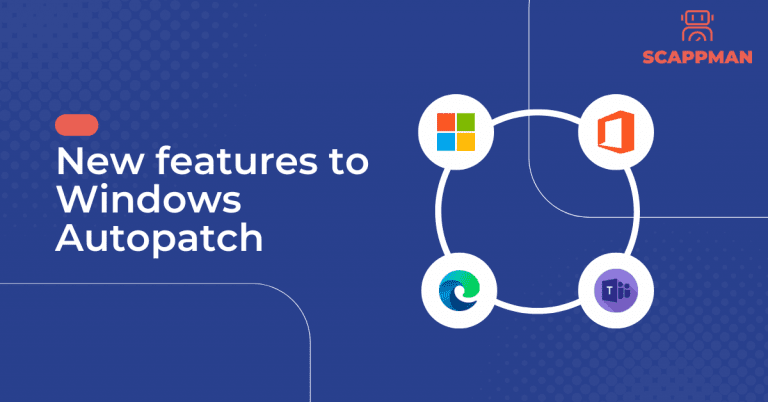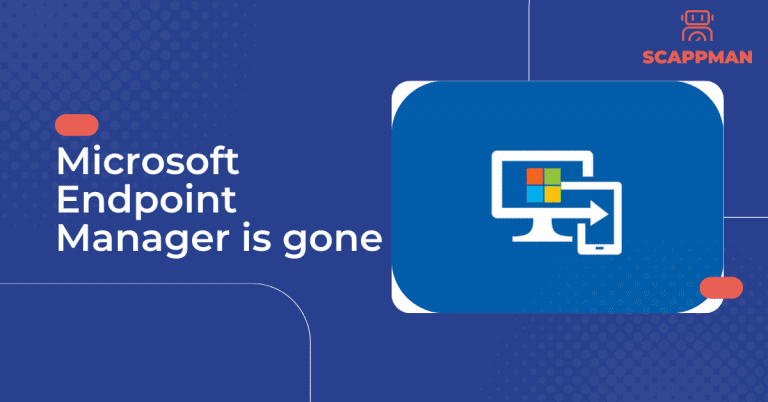Thank you for registering!
See you at the webinar “Introducing Discovery & Autopatch features”!
April 24, Monday
17:00 CET | 9:00 AM MT
During the webinar you’ll learn 👇
- How Discovery & Autopatch feature works and its benefits;
- How to use Discovery & Autopatch to secure and maintain third-party applications in Microsoft Intune.
Webinar Overview: During the webinar, we will show you a demo, so you can see Discovery and Autopatch in action from the internal IT team and MSP perspective.
More content about Microsoft Intune

Moving your application management from ConfigMgr to Microsoft Intune
Read more about the advantages of migration to Microsoft Intune, how to plan the migration process, and the peculiarities of application packaging in Intune.

Microsoft reveals new features to Windows Autopatch: app-based authentification, quality updates reporting and post-registration device readiness
In April, Microsoft launched the Windows Autopatch update service for business customers, making it generally available later in July. The main of the service is to take charge of update deployments and reduce the burden on IT admins. On Microsoft Ignite 2022, Microsoft introduced new features that are now available on Windows Autopatch. Windows Autopatch is a cloud service that automatically manages Windows 10/11, Microsoft 365 Apps for enterprises, Microsoft Edge, and Microsoft Teams updates for enterprises in order to improve security and productivity in organizations. This includes the creation of testing rings, monitoring health, and rolling back updates if needed. Windows Autopatch is aiming to make life of IT admins easier so they can focus on the tasks that matter, taking over patching Microsoft products. Now there is a new application-based authentication available in Autopatch through Microsoft Modern Management Management app. Thanks to this new certificate-based authentication, enterprise users can avoid the chore of rotating passwords or handling Conditional Access (CA) policies. Also, Microsoft has made the process of post-registration device readiness simpler. Previously, after running the Readiness assessment tool, your devices might have been sorted out into 2 tabs: Ready and Not Ready. Now devices that do not meet the prerequisites for Windows Autopatch enrollment are sorted in a “Not registered” tab whereas the devices with conflicting configurations are shown up in the “ Not Ready” tab. And it’s possible to get solutions tailored to each of them by clicking on the devices. Microsoft explains why this change is important: “We heard that making sure devices remain healthy and eligible to receive updates—and reporting on the status of those devices—was time-consuming (and expensive). With this update to the device registration flow, IT admins can easily detect and take action to remediate configuration mismatches or other issues in their environments that prevent devices from receiving software updates from Windows Autopatch.” And finally, quality updates reporting service has become available. Windows Autopatch reporting is designed to allow visibility into update status and device health, and offer insights into managed endpoints. The reporting offers data on update compliance as well as device and application performance. To see the quality update summary report go to Reports > Windows Quality Updates. All devices report shows the update status of all devices. All devices report – historical shows the update status of all devices over the last 90 days. Eligible devices report – historical shows the update status of eligible devices over the last 90 days. Ineligible devices report – historical shows why devices have been ineligible over the 90 days.

Microsoft Endpoint Manager is gone: Microsoft introduces Microsoft Intune product family
Microsoft Ignite conference takes place these days, and the company has already announced a lot of updates designed to help companies be more secure and productive. For enhanced endpoint management, Microsoft announced the advanced endpoint management plan that will include remote help, Microsoft Tunnel for Mobile application management, Endpoint Privilege Management, intelligent automation and data insights, and automated app patching and packaging – all based on Intune. Yes, not on Microsoft Endpoint Manager. The name Microsoft Endpoint Manager will no longer be used. That means, that from now on Microsoft refers to cloud management as Microsoft Intune and on-premises management as Microsoft Configuration Manager. The number of Intune-managed devices (including Windows, Android and iOS) increased by 60% last year. Nearly 50% of Microsoft-managed endpoints are now cloud-connected, compared to less than 20% in 2020. Because of the growing demand for the cloud endpoint management solution, Microsoft promotes the idea to move to the cloud for its new and on-prem customers. But it does not mean that Configurator Manager is dead. It will remain a part of Microsoft Intune product family and continue to be updated on the regular basis. But if you want to enjoy all the features coming from Intune, you have to move to the cloud. If you are interested in connecting your tenant to the cloud, Microsoft’s FastTrack can provide deployment assistance at no additional cost for eligible Microsoft 365 customers. To manage application installations and updates on Intune-managed devices in a new way, use Scappman. Scappman is a third-party application patching solution that automates the patching process for Intune-managed devices. Scappman eliminates the need for manual patching and provides a more efficient way to keep your third-party applications up to date. Read more about how to get started with Microsoft Intune: How-to guide: Getting started with Microsoft Intune (part 1) How-to guide: Getting started with Microsoft Intune (part 2) How-to guide: Getting started with Microsoft Intune (part 3) How-to guide: Getting started with Microsoft Intune (part 4)
